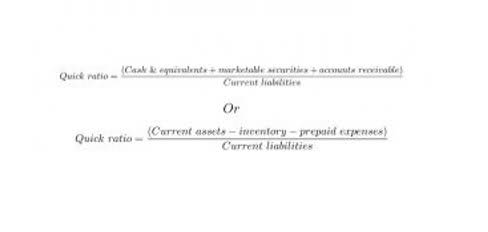
Verizon has tallied $6.4 billion in excess free cash after paying dividends and covering its capital spending plan this year. Verizon ended the quarter with a leverage ratio of 2.6, down from 2.7 in the year-ago period. That relatively low leverage ratio supports the company’s strong investment-grade bond ratings (A-/BBB+/Baa1). On the cash flow front, the statement reveals a healthy 33.2% rise in operational cash, totaling $32.4 million.
- There is some overlap when it comes to taxes on cash dividends and stock dividends, and one case in which no taxes have to be paid.
- An investor who wants to reap the benefits of dividends can choose an ETF that focuses on dividend-paying stocks.
- If a company keeps a consistent dividend policy, it may have to borrow money to pay cash dividends that may incur interest costs.
- Dividends are the additional payouts that shareholders receive when the company that they are holding shares in earns profits and decides to distribute them.
However, doing so means existing shareholders will see their shares diluted. On the other hand, cash dividends are one-time assured payouts that happen as part of dividend declarations. Remember that there is no compulsion for companies to declare dividends. It is rather just a benefit or a reward that companies give the shareholders for having placed their trust (and money) in the company.
Don’t be fooled by Waste Management’s safe and steady operations — it brings intriguing potential to beat the market.
Deciding between an organization that issues cash or stock dividends boils down to your financial goals. Stock dividends carry more risk, but they also have the potential to increase in value over time. Cash dividends offer immediate benefits, and investors have flexibility in how they choose to use them. A stock dividend has no immediate tax consequences for the recipient. They’ll only incur taxes when they sell their shares on the market at a gain.
If the company in the example above issued a $0.25 dividend for every share owned by investors, its share price would likely fall by the same amount. Like cash dividends, stock dividends tend to affect a company’s stock price. While the overall value of the company remains the same, stock dividends increase the number of shares that exist, resulting in a slightly diluted stock price.
Common Stock Dividends vs Preferred Stock Dividends
Stock dividends offer some risks to investors as the share prices of the company may fall after issuing stock dividends. They can retain additional stocks for long-term growth and capital gains or sell them to convert them into cash. It is for the fact that a company is only sharing the total accumulated https://www.bookstime.com/ economic value of the company with its shareholders. From a company’s perspective, stock dividends allow the business to reward its shareholders and incentivize more investment without parting with any of its cash. This can be especially beneficial to companies facing liquidity challenges.
In the long-term, a cash or a stock dividend should not impact the share price of a company. Companies with an established history and accumulated profits also prefer cash dividends. However, liquidity is a major concern for these companies as they often accumulate profits but lack cash. Companies paying a cash dividend require that money to be set aside for that purpose. Unfortunately, this is money that isn’t doing anything to benefit the financial statements.
What Is an Example of a Stock Dividend?
Shareholders end up owning more shares at a lower price per share. Cash dividends involve converting a portion of equity into cash on behalf of shareholders. In February 2022, the sportswear brand announced a $0.305 per share quarterly cash dividend payable Apr. 1, 2022. For fiscal year 2021, the company saw year-over-year (YOY) increased revenues of 19.3%.
Funds may also issue regular dividend payments as stated in their investment objectives. Preferred shareholders also receive cash dividends in the same manner as common shareholders do. The main difference is that preferred dividends are often fixed at a rate stipulated in the security’s prospectus. Cash payments offer you the advantage of choosing whether to reinvest the dividends or not. But if you do decide to reinvest your cash dividend back into the company, its growth rate would be slower than that of a stock dividend.
That provided the company with plenty of money to cover its dividend payouts, which have totaled $8.2 billion this year. Those payments are up from $8.1 billion in 2022 because Verizon has increased its dividend by 2% over the past year. Even with that higher outlay, Verizon’s dividend payout ratio has fallen. how are cash dividends different from stock dividends? It was at 56% through the first nine months of this year, an improvement from 65% compared to the prior-year period. Moreover, STAG Industrial’s balance sheet resilience, with a notable price-to-book ratio of 1.81 against a market capitalization of $6.39 billion, paints a picture of latent potential.
Certain dividend-paying companies may go as far as establishing dividend payout targets, which are based on generated profits in a given year. For example, banks typically pay out a certain percentage of their profits in the form of cash dividends. If profits decline, the dividend policy can be amended or postponed to better times. If the company does not perform well, its share prices will fall which would eventually lower shareholders’ return from stock dividends. Stock dividends are thought to be superior to cash dividends as long as they are not accompanied by a cash option.
How a Cash Dividend Works
It is important to keep a record of the length of time that an investment is held, because a lot of money could be saved in taxes. When the day comes and you decide to sell your shares, then capital gains taxes are applied. If the shares are held for less than one year, then a higher tax rate will be applied, as the Internal Revenue Service (IRS) will look at the transaction as a short-term capital gain. Receiving more shares could almost mean taking on more risk, should there be a change in business strategy and/or senior management. These moves could be seen as a negative by the market—and as a big disadvantage against a cash dividend—since you have just accumulated more shares. Account for cash dividends and stock dividends; differences between them.
- However, the type of dividend chosen will have different implications for the recipient and the company.
- One upshot of cash dividends is that they generally have a temporary downward effect on the company’s share price.
- Dividend yields are expressed as a %, and reflect the annual dividend value relative to the latest share price.
- Dividends, whether in cash or in stock, are the shareholders’ cut of the company’s profit.
- To be honest, for most retail investors with smaller brokerage accounts, neither cash nor stock dividends really “move the needle” when it comes to their financial standing.
When a stock dividend is paid out to shareholders, there are more shares issued by the company. This results in more shares outstanding, meaning each share is worth less of the company. For investors looking to build a new position in the company, this is seen as a big negative. Another method which can be used to reward shareholders is by acquiring cash or more shares of the company in the form of a cash dividend or a stock dividend. These provide exposure to the company’s growth without having to sell shares while being rewarded at the same time.
Which Companies Pay Dividends?
When shareholders keep stock dividends and do not convert them to cash, they do not incur a tax obligation. Therefore, stock dividends offer a tax advantage for some shareholders as well. They invest in companies that offer a consistent or growth dividend policy to receive confirmed earnings every year.

